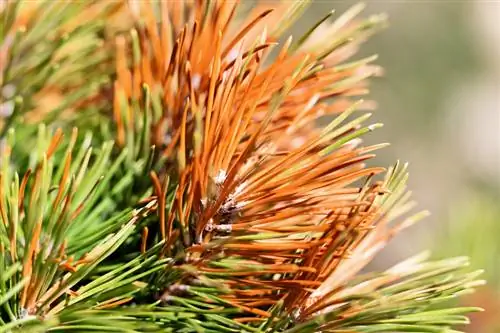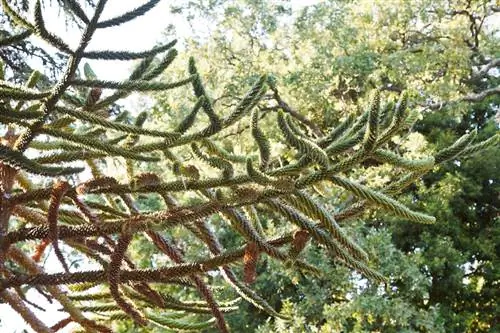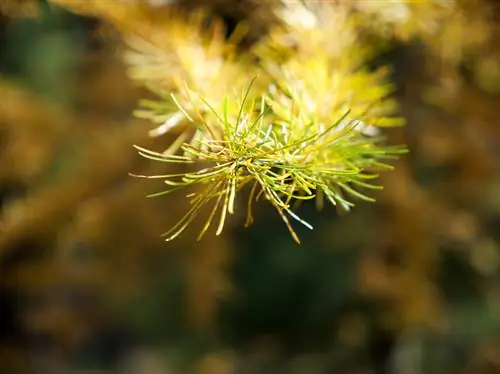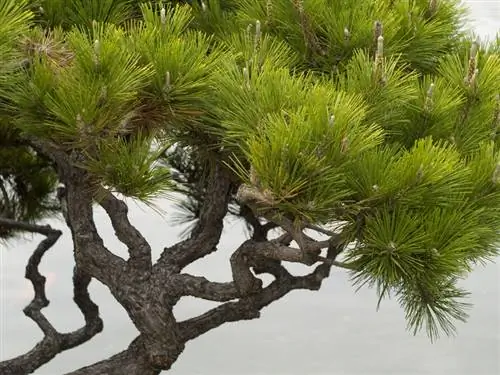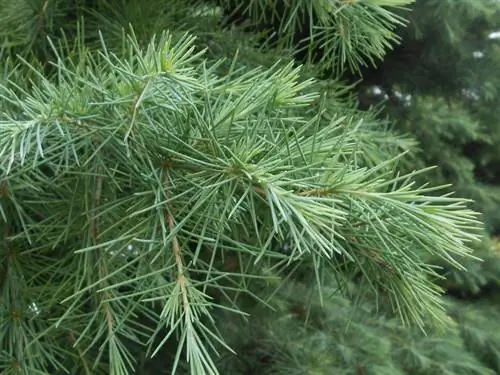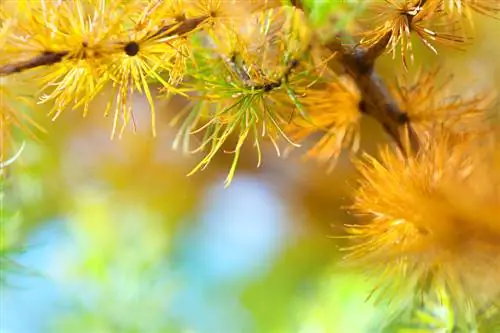- Author admin [email protected].
- Public 2023-12-16 16:46.
- Last modified 2025-06-01 06:02.
Brown needles not only look old, but also not very he althy, let alone beautiful. But in order to make itself and its suffering noticeable, the Japanese umbrella fir demonstrates brown needles if the location is poorly chosen or if care is neglected.
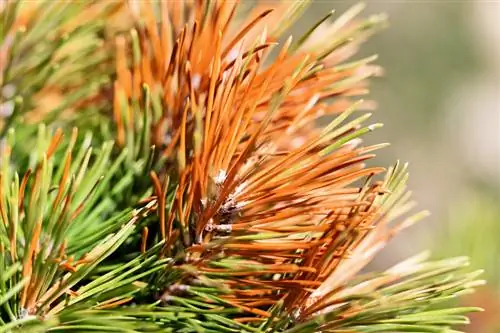
Why does my Japanese umbrella fir have brown needles?
If the Japanese umbrella fir has brown needles, this may be due to drought, normal aging, frost damage, rot, fungus, nutrient deficiency, over-fertilization, sunburn or too much lime in the soil. Yellow needles are a warning signal that action is required.
Prolonged dryness leads to brown needles
Japanese umbrella firs need permanently moist soil. They have shallow roots in the soil, which is why they cannot tolerate the soil drying out. They do not reach the groundwater. If there is drought for several weeks, the needles will soon turn brown. They have dried up and it doesn't take long until they fall off and the coniferous plant becomes bare.
You can counteract this by watering your Japanese umbrella fir regularly with low-lime (€24.00 on Amazon) to lime-free water. Outdoor plants should receive a thick layer of mulch. This keeps moisture better in the soil. Potted plants should not be exposed to direct sun as they will dry out too quickly.
Normal signs of aging
But brown needles - at least a few - can also send a less worrying message: the Japanese umbrella fir is aging and renewing its needles. Their needles are evergreen. But that doesn't mean it will last for decades. Individual needles are sporadically shed and replaced again and again. They usually turn brown beforehand.
More reasons for brown needles
But there can also be other reasons. The Japanese umbrella fir turns brown when:
- she suffered frost damage
- is affected by rot in the root area
- Fungal pathogens sitting on their shoots
- there is a severe nutrient deficiency (especially potassium deficiency)
- she was over-fertilized with nitrogen
- she has a sunburn
- there is too much lime in the soil
First yellow, then brown - time to act
The needles often turn yellow before they turn brown. As soon as they turn yellow in color, you should act quickly. Then the respective parts of the plant can sometimes still be helped. If they are brown, help comes too late. Needles are shed and shoots can be cut off.
Tip
Japanese umbrella firs that are in pots are even more susceptible to brown needles. Make sure to water them several times a week in summer, fertilize them at least twice a year and protect them from frost in winter!

